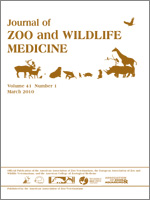In humans, fetal echocardiography represents the most important tool for the assessment of the cardiovascular well-being of the fetus. However, because of logistic, anatomic, and behavioral challenges, detailed fetal echocardiographic evaluation of marine mammals has not been previously described. Because the application of fetal echocardiography to cetaceans could have both clinical and academic importance, an approach to evaluating the fetal dolphin's cardiovascular status was developed with conventional, fetal echocardiographic techniques developed in humans. Eight singleton fetal bottlenose dolphins (Tursiops truncatus) were evaluated, each between 6 and 11 mo gestation; six fetuses underwent two fetal echocardiographic evaluations each, four at 3-mo intervals, and two at 0.5-mo intervals. Evaluations were performed without sedation, using conventional, portable ultrasound systems. Multiple transducers, probes, and maternal dolphin positions were used to optimize image quality. Fetal echocardiography included two-dimensional imaging and color flow mapping of the heart and great arteries, as well as pulsed Doppler evaluation of the umbilical artery and vein. Thorough evaluations of the fetal dolphins' cardiovascular status were performed, with the greatest resolution between 8 and 9 mo gestation. With the use of published human fetal echocardiographic findings for comparison, fetal echocardiography demonstrated normal structure and function of the heart and great arteries, including the pulmonary veins, inferior vena cava, right and left atria, foramen ovale, tricuspid and mitral valves, right and left ventricles, ventricular septum, pulmonary and aortic valves, main pulmonary artery and ascending aorta, and ductus arteriosus. Pulsed Doppler techniques demonstrated normal umbilical arterial and venous waveforms, and color flow mapping demonstrated absence of significant valvar regurgitation. Fetal echocardiography, particularly between 8 and 9 mo gestation, can provide a safe and detailed assessment of the cardiovascular status of the fetal bottlenose dolphin.
How to translate text using browser tools
1 January 2010
Fetal Echocardiographic Evaluation of the Bottlenose Dolphin (Tursiops truncatus)
Mark Sklansky,
Michael Renner,
Patricia Clough,
Gregg Levine,
Michelle Campbell,
Rae Stone,
Todd Schmitt,
Ruey-Kang Chang,
Jayne Shannon-Rodriguez
ACCESS THE FULL ARTICLE
Bottlenose dolphin
fetal echocardiography
fetal heart
fetal ultrasound
Tursiops truncatus





